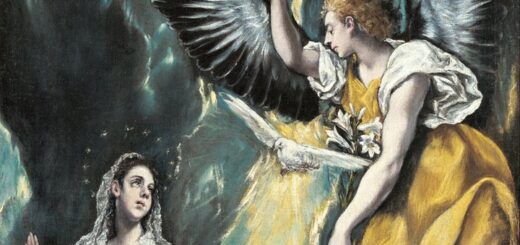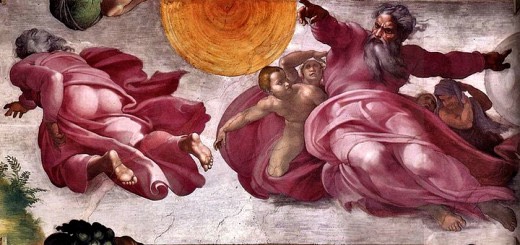The erotic Christ. Sin as exploitation, grace as reciprocity
Theological reflections of the rev. Patrick S. Cheng* Published on the blog JesusinLove.blogspot (United States) on November 17, 2010, freely translated by Andrea D
The first Christological model of sin and grace for lesbian, gay, bisexual and trans people is the erotic Christ. According to Audre gross, black feminist lesbian writer, the erotic concerns the relationship and desire for the other; It is the power that rises from the "share"With another person.
The erotic is "share our joy in satisfaction"Of the other, rather than using the other as a mere"object of satisfaction"2. The erotic Christ arises from the reality that Jesus, the verb made flesh, is the actual incarnation of the deepest desires of God for us.
Jesus got off the sky not for a divine car-granting, but for us and our salvation. In the Gospels Jesus often shows his love for all those with whom he comes into contact, even physical. He uses physical contact to treat diseases and disabilities and allows the beloved disciple to lose his chest during the last dinner.
In turn, Jesus is physically touched by many of the people who meet him. It was touched by the hemorrhisma that hoped to heal thanks to his powers. It is anointed with a precious oil from the woman from Bethany. After the resurrection Jesus lets Tommaso put his finger in the signs of the nails and his hand in the cost. All these physical interactions are manifestations of God's love for us, and our mutual love for God, through the erotic Christ.
Carter Heyward, a lesbian theologian and episcopal priest, wrote of the erotic Christ in the context of the "radically mutual character"Of the life, death and resurrection of Jesus Christ. For Heyward the meaning of Jesus does not only reside in his touching others (both physically and in other ways), but also in his being"healed, freed and transformed"From those who met. This power of mutual relationship is not something that exists exclusively in the trinitarian relationship between God, Jesus and the Holy Spirit. It is instead present in each who has"loved, resisted, suffered, lost"3.
Sin: exploitation
So what are sin and grace in the light of erotic Christ? If we conceive the erotic Christ as the deepest desire of God to be in relation to us, sin (opposite to the erotic Christ) is the exploitation, the complete lack of reciprocity or concerns for the needs and desires of others. For many, the sin in the context of the erotic Christ assumes the form of the sexual practices in which the partner is treated as a mere object of gratification or in any case less than a person (for example the sex that derives from addiction).
These people, in particular those who live with sexual dependence and/or a low self-esteem, embark on anonymous, insecure and/or drugs in which the main concern, if not the only one, is self-graphic. The sex-dependent partners are reduced to stimulation tools and not seen as human beings in themselves. This is the sin of exploitation at work: to use partner as a stimulation object and not as a person.
Grace: reciprocity
The grace in the context of the erotic Christ is therefore reciprocity, or the profound awareness of being in relation to the other. Gross writes that grace can assume the form of a simple thing such as "the profound sharing of any activity with another person", also the dance4.
For Heyward, the grace of erotic Christ necessarily materializes in the "justice-love" and in the sharing "of the earth and vital resources for our survival and happiness as people and creatures"5.
The grace of reciprocity is to understand that we are all intimately connected to each other and creation. A certain commitment is required to change our way of seeing and interacting with the world, from a social, political and sexual perspective.
The grace of reciprocity is a gift that allows us to feel an authentic connection with others and with God.
__________________
2 See Audre gross, "Use of the erotic: The Erotic As Power" in Sexuality and Te Sacred: Sources for Theological Reflection, ed. Marvin M. Ellison and Kelly Brown Douglas, 2nd ed. (Louisville, Ky: Westminster/John Knox Press, 2010), 75.77
3 See Cartet Heyward, Saving Jesus from Those Who are Right: Rethinking What It Means to Be Christian (Minneapolis: Fortress Press, 1999), 74. See also Carter Heyward, Touching Our Strengh: The Erotic As Power and The Love of God (New York: Harpersanfrancisco, 1989) 1989)
4 See gross, "Use of the erotic", 75
5 See Heyward, Saving Jesus from Those Who are right.
.
* "Rethinking Sin and Grace for LGBT People TODAY" (Rethink sin and grace for LGBT people today) is a text by Rev. Patrick S. Cheng, who was published divided into five short songs entitled: the erotic Christ (sin as exploitation, grace as reciprocity); the revealed Christ (sin as hidden, the grace of coming out); the liberator Christ (sin as apathy, grace, as activism); The transgressive Christ (sin as conformity; grace as deviance): the hybrid Christ (sin as singularity, grace as hybridness). Article taken from one of his essays already published in Sexuality and the Sacred: Sources for Theological Reflection (Sexuality and the sacred: sources for theological reflection), edited by Marvin M. Ellison and Kelly Brown Douglas, publisher Westminster John Knox Press, 1994.
.
Patrick S. Cheng He is a professor of historical and systematic theology at the Episcopal Divinity School in Cambridge (Massachusetts, the United States) and was ordained Minister of Metropolitan Community Churches (MCC), a Christian name open to LGBT people, also collaborates in the Religion section of the Huffington Post. He has lived in Cambridge with his partner, for almost two decades, Michael. His website is www.patrickcheng.net.
.
Original text: eRotic Christ / Rethinking Sin and Grace for LGBT People






